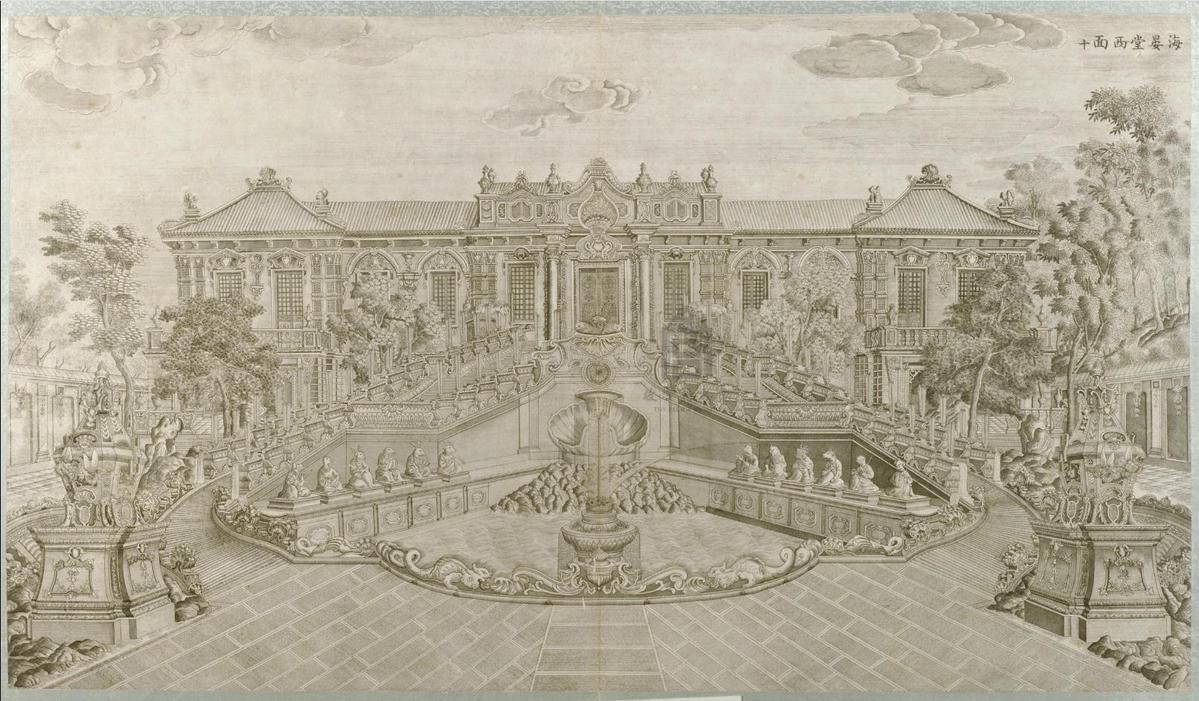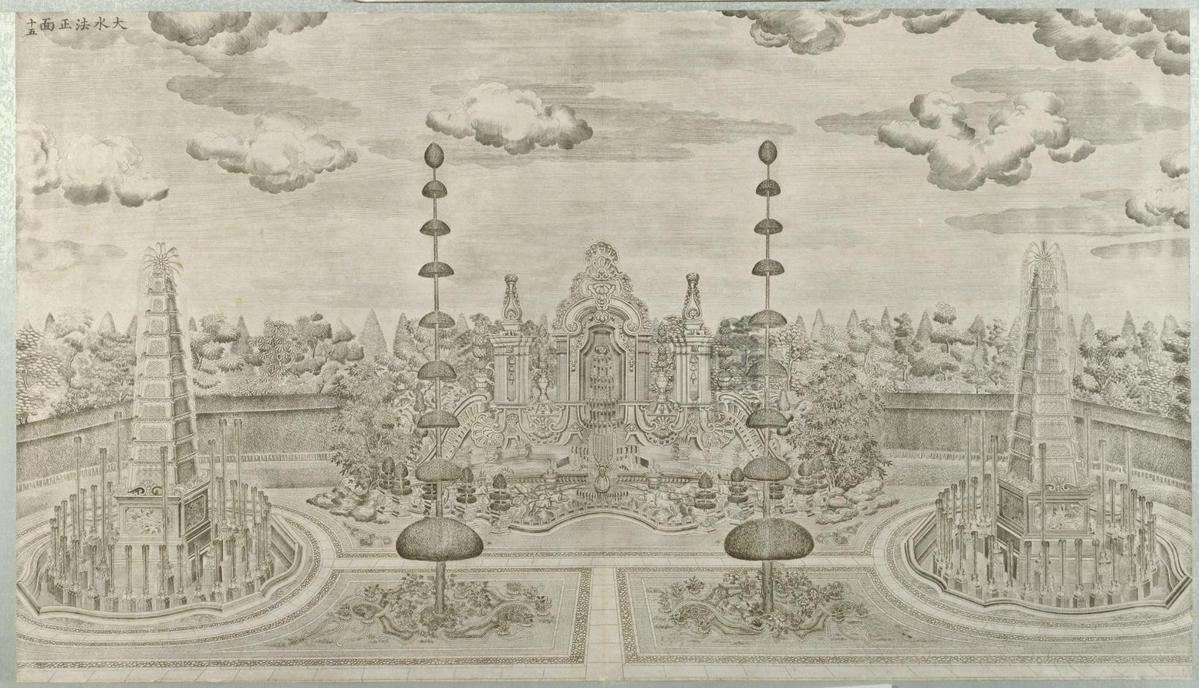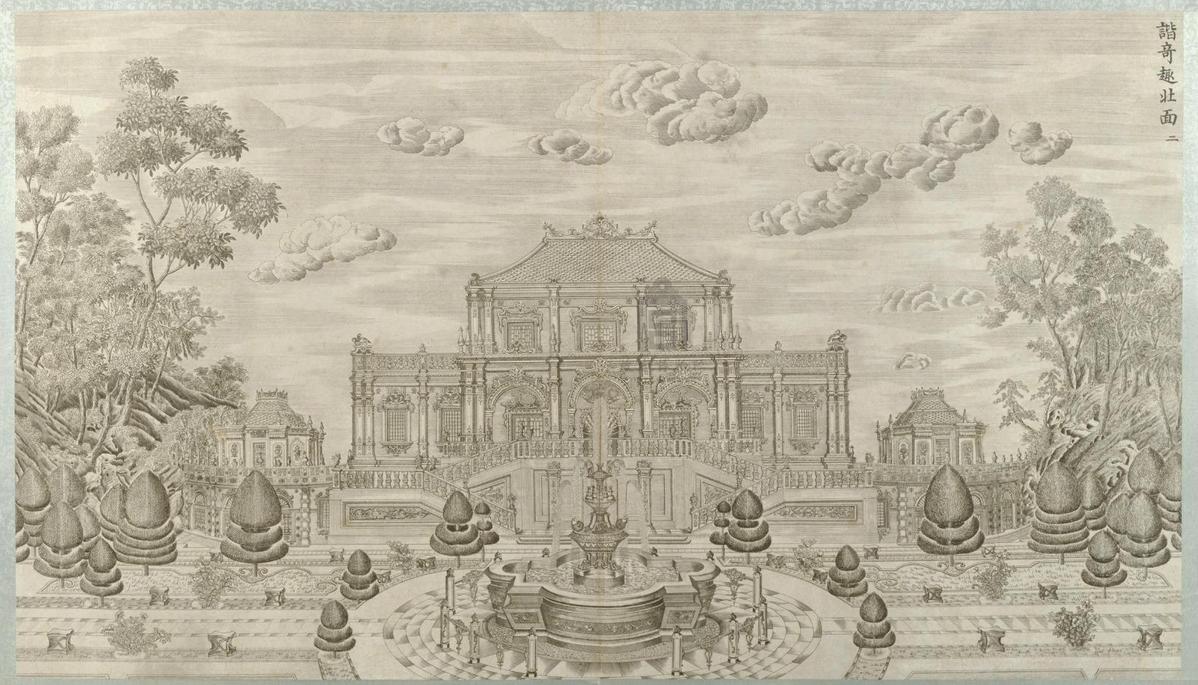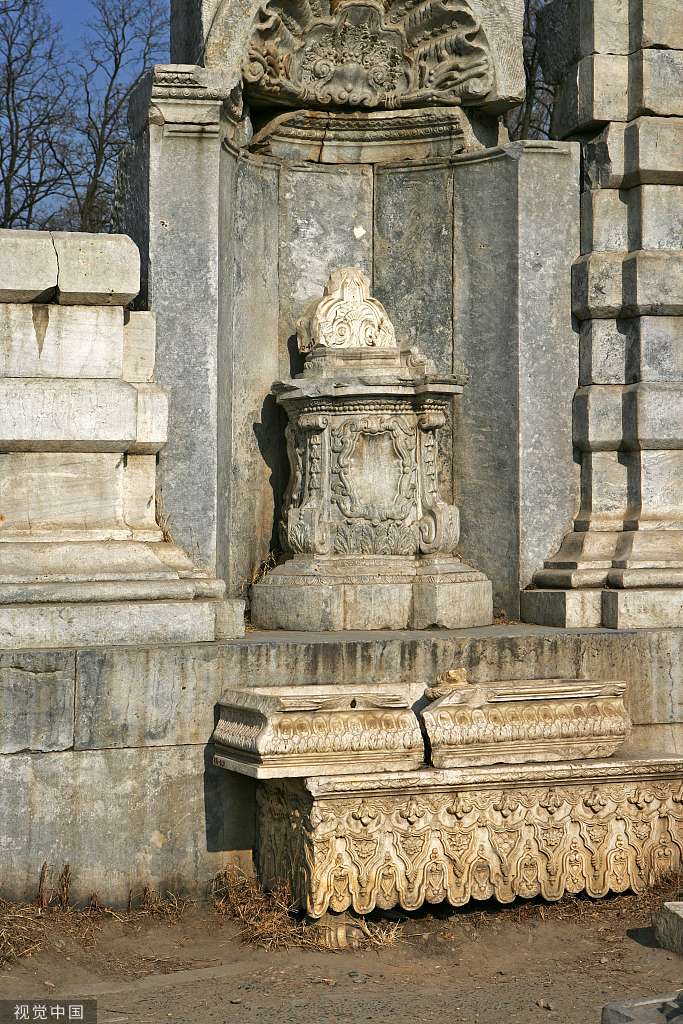Western-Style Palaces

Construction of the Qing imperial Garden of Perfect Brightness (Yuanming Yuan) began in the 18th century. From 1747 on, Western missionaries worked with Chinese architects and builders in the planning and construction of a particular scenic area reserved in the northeast of the garden -- the Western-style Palaces Area.
Drawn to the fountains he happened to see depicted in Western paintings, the reigning emperor Qianlong (r. 1736-95) commissioned the design and construction of fountains and waterworks by the Jesuit missionaries in his service. By introducing western style architecture, he hoped to adorn his huge garden with a bit of exotic cachet.
The area was a cluster of Western-style fountains, aviaries, a pavilion, and a maze. The architecture and the landscape were designed in the Le Nôtre style, which was trendy in Europe at the time.
The Italian Jesuit Giuseppe Castiglione (Chinese name Lang Shining, 1688-1766), the French Jesuit Jean-Denis Attiret (Chinese name Wang Zhicheng, 1702-68), and the Bohemian Jesuit Ignatius Sichelbath (Chinese name Ai Qimeng, 1708-80), three missionaries serving the Emperor Qianlong as court painters, were assigned to lead the architectural design and create the stone carvings. They also contributed trompe l'oeil paintings for decorating the interiors of garden chambers.
Remarkably, the French botanist Pierre d'Incarville (Chinese name Tang Zhizhong, 1706-57) was in charge of the floral landscaping. Chinese officials oversaw the implementation of their design and took care of the construction. In 1759, the project was officially completed. In a letter written in 1743 Attiret elaborated on the grandiose nature of the Garden of Perfect Brightness in a professional painter's eyes, introducing Europeans for the first time to this oriental garden.
Two years after his arrival in Beijing, the French Jesuit missionary Michel Benoist (Chinese name Jiang Youren, 1715-74) was recommended by Giuseppe Castiglione to the Emperor Qianlong, the one who had come across Western fountain images and wanted to find someone to replicate them in his garden. Benoist was not a professional fountain architect but he took the assignment and participated in a number of fountain designs for the garden, including the Grand Fountains (Da Shuifa) and the one in front of the Palace of Balanced and Harmonious Wonder (Xie Qiqu).
The Area of Western-style Palaces only takes up two percent of the entire garden, yet over two dozen fountains of different scales were built there. Some scholars believe Benoist applied the knowledge of hydro mechanisms he had acquired in Europe before he came to China, and attribute the famous "water clock" constructed in front of the Hall of Tranquil Sea (Haiyan Tang) to him.
The "water clock "was a time-telling water-work infrastructure featuring bronze sculptures of 12 personified Chinese zodiac animals divided in two arrays, standing on the two sides of the basin. Each animal, associated with two hours of a 24 hour day, successively spouted water during the hours it represented. At high noon, the 12 animals would spout water together to recognize the hour.


In 1860 Anglo-French forces looted the garden, and burnt down the foreign style palaces. Ensuing destructions in the following decades made the garden almost completely disappear. Only remnants of the white marble components still exist for people to conjure up those imposing fountains and palaces. The ruins have become a national trauma chiseled in people's memory, but paradoxically they are also a concrete testimony to the European missionaries' contribution of introducing Western culture and science to China in the 18th century.




Address: 28 West Qinghua Road, Haidian district(inside Yuanmingyuan Garden)
Admission: 15 yuan ($ 2.13)
Hours: 7:00-19:30 (January - March 15, last ticket sold at 17:30)
7:00-20:00 (March 16 - April, September - Oct 15, last ticket sold at 18:00)
7:00-21:00 (May - August, last ticket sold at 19:00)


